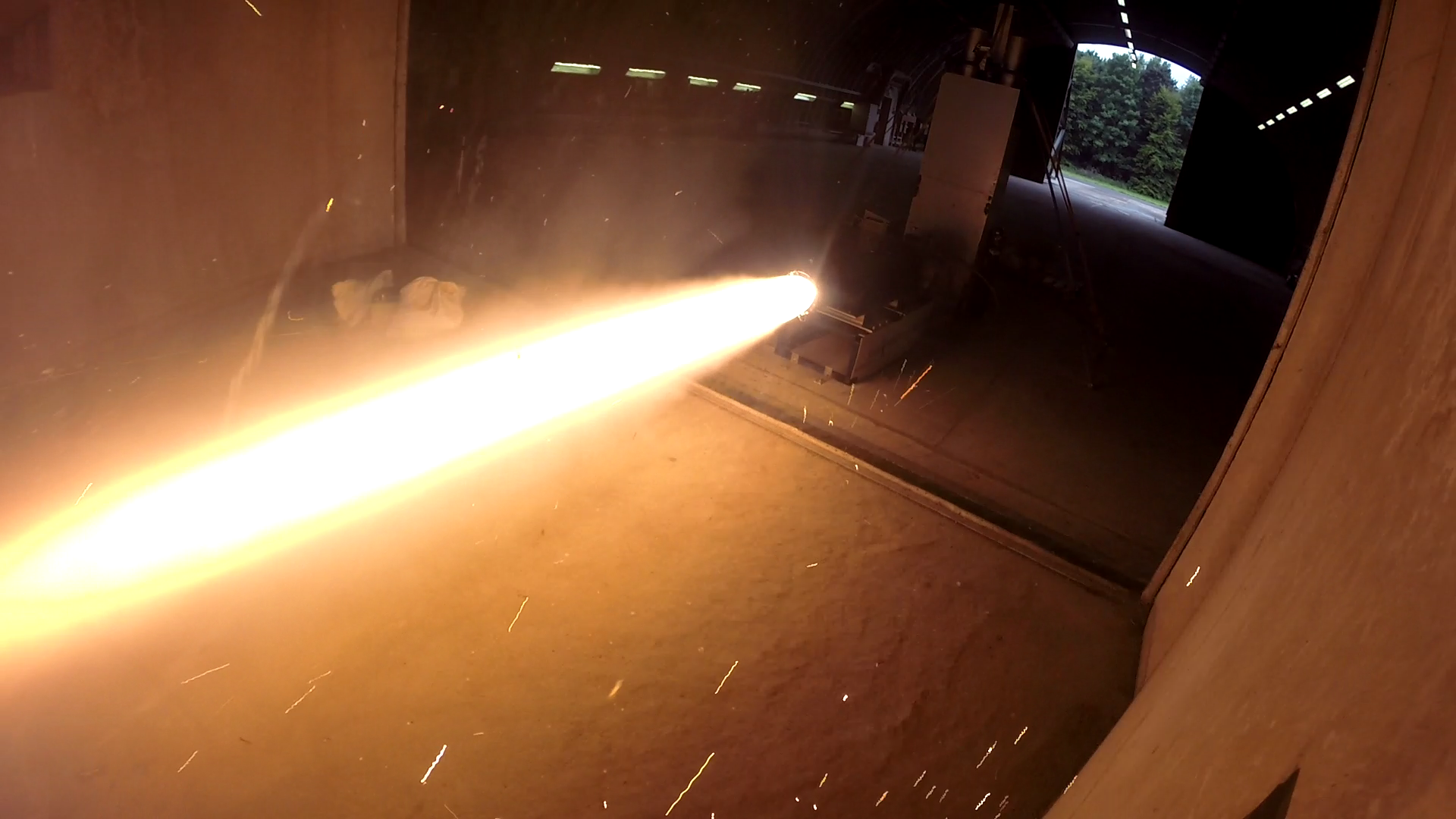
In this second part of the explanation of the Nimbus engine, we will focus on the nozzle. The nozzle is the part of the engine where the flaming and expanding gasses flow out, accelerating our rocket to up to three times the speed of sound. It is located all the way at the bottom of the rocket integrated with the engine tube. It is made out of a solid part of high-grade graphite.
The property that gives a nozzle its accelerating behaviour is the shape. In the direction of the flow, the gas gets compressed first which makes it speed up, then it flows through the smallest part of the nozzle, called the throat. In the throat, the Mach number is exactly 1, this part is essential for acceleration to velocities higher than the speed of sound. After the throat, in the bell-shaped bottom area, the Mach number increases to about 3 – three times the speed of sound. This speed combined with the high mass flow will ensure an extreme acceleration of the rocket.
Of course, due to the hot combusting gasses flowing through the nozzle, this region gets very hot. Not many materials are able to withstand this heat, and we chose graphite as it does not conduct heat well and it expands very little under thermal stress. In the initial development phases of the Stratos III engine, the Nimbus DHX-400, static testing was done with a nozzle provided to us by two companies – Carbonline and JTW Astronomy.
As for the nozzle, we do not use normal consumer grade graphite as can be found in the average pencil. For the solid blanks, we went to our partner Carbonline. Their experience with high-quality graphite for use in high-temperature ovens makes them the perfect partner in graphite and graphite machining. The environment inside these ovens goes over 2000 degrees Celcius and thus in temperature quite similar to our exhaust temperature.
The blanks were then sent to JTW Astronomy, where they make parts of telescopes this requires an extreme level of precision. Although astronomy and rocketry take a different approach towards space, the fascination is there this common fascination luckily got us to work together. With the precision needed for telescopes, they helped us by accurately machining the graphite blanks into our precisely defined nozzle shape to come closer to space.
With the help of these sponsors, the development of Stratos III was kick-started and will help us to break boundaries!
by Adriaan Smit & Jeije van den Wijngaart


